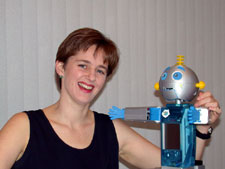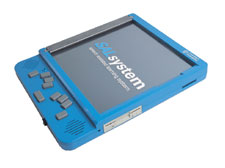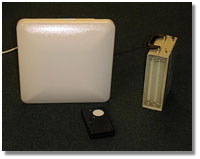|
ARLINGTON, Va.—The Interagency Committee on Disability Research (ICDR), in its latest report to the President and Congress, announces progress in several areas including rehabilitation, technology transfer, dissemination of disability statistics, and efforts to break down barriers to the disabled in education, the workforce, and public facilities.
The National Science Foundation (NSF) is an active partner of the ICDR, the multi-agency body that coordinates federal efforts in disability research and ensures wide public access to research results.
The report also contains recommendations for future direction, including efforts to improve communication between the ICDR and the public through a web portal and other means. Information on the ICDR is available at their website, http://www.icdr.us/. An electronic version of the report is available at: http://www.icdr.us/pubs.html#report.
The following websites provide additional information on the disabilities research programs NSF supports:
Biomedical Engineering and Research to Aid Persons with Disabilities
Human-Computer Interaction
Computer Vision
Robotics
Universal Access
Digital Society and Technologies
Program for Persons with Disabilities
Small Business Innovation Research program
For more information contact:
NSF disabilities research expert and ICDR liaison: Gil Devey, (703) 292-7943, gdevey@nsf.gov
Related NSF links:
NSF tipsheet on disabilities research:
http://www.nsf.gov/od/lpa/news/02/tip020912.htm
NSF report: "Women, Minorities, and Persons with Disabilities in Science and Engineering" http://www.nsf.gov/sbe/srs/nsf03312/start.htm
The National Science Foundation (NSF) is an independent federal agency that supports fundamental research and education across all fields of science and engineering, with an annual budget of nearly $5.3 billion. NSF funds reach all 50 states through grants to nearly 2,000 universities and institutions. Each year, NSF receives about 30,000 competitive requests for funding, and makes about 10,000 new funding awards. The NSF also awards over $200 million in professional and service contracts yearly.
Receive official NSF news electronically through the e-mail delivery system, NSFnews. To subscribe, send an e-mail message to join-nsfnews@lists.nsf.gov. In the body of the message, type "subscribe nsfnews" and then type your name. (Ex.: "subscribe nsfnews John Smith")
Useful NSF Web Sites:
NSF Home Page: http://www.nsf.gov
News Highlights: http://www.nsf.gov/od/lpa
Newsroom: http://www.nsf.gov/od/lpa/news/media/start.htm
Science Statistics: http://www.nsf.gov/sbe/srs/stats.htm
Awards Searches: http://www.fastlane.nsf.gov/a6/A6Start.htm
|
 |

Dr. Corinna Lathan poses with CosmoBotTM, an "alien" space robot that her firm designed to be used in therapy and educational applications for children with disabilities. Children with disabilities will be able to meet educational or therapeutic goals using the toy in various applications that can be configured by teachers, therapists and parents. The CosmoBotTM system is being developed with motivation in mind so that the therapist can focus on providing quality therapy rather than just trying to make therapy fun.
CosmoBotTM's wheels can move forward, backward, left, and right, its arms can move up, down, together, and apart, and its head can move up and down ("yes"), left and right ("no"), and any combination of the two. CosmoBotTM's mouth also moves. The robot's arms, head, and mouth can be programmed to move to any position within their specified ranges of motion.
Photograph courtesy: AnthroTronix, Inc.
Select image for larger version
(Size: 44KB)

Freedom Scientific's SAL Speech Assisted Learning System.
Image courtesy: Freedom Scientific
Select image for larger version
(Size: 52KB)

These pictures show the 3D animated conversational agent -- named "Baldi" -- that acts as a virtual tutor for hearing-impaired children at the Tucker-Maxon Oral School as part of Ron Cole's NSF-funded project. For more details, see http://cslu.cse.ogi.edu/tm

Fluorescent lights used in the Talking LightsTM system. Engineers have developed a system to turn a fluorescent light into a transmitter by controlling the rate of its flicker. The system, known as Talking LightsTM, is the first to use the frequency of the incoming electric current to transmit both analog and digital information. In several recent and ongoing clinical tests, the researchers are helping visually impaired individuals and mentally impaired hospital patients navigate hallways by transmitting location information from overhead lights to participants' headsets.
Photo Credit: Image courtesy of Talking LightsTM
Select image for larger version
(Size: 96KB)
Larger versions
(Total Size: 192KB)
of all images from this document
 Note
About Images Note
About Images
|





